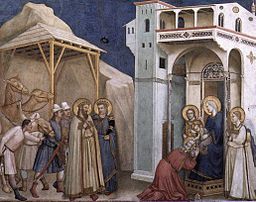ROC day is sometimes called “St. Distaff’s Day”. Of course, there is no such
saint! It is celebrated on January 7th, the “first free day after Twelve-Eve Christmas”,
which was a holiday of transition from Christmas revelries to the
round of everyday work. It is also called “Rock” day, as the distaff was
sometimes referred to as a rock.
Traditionally, in old England, women did not spin during the twelve days of
Christmas. ROC day or St. Distaff’s day, was their day to get back to work,
and they certainly made the most of it! They were not without troubles
during this time, because it was tradition that the plowmen thought it sport to
set fire to the flax and tow.
The women kept buckets of water always ready to
put out the fires. It was a game of sorts, with many young men being
“drenched” to the bones! Also the spinners went back
to work a day ahead of the weavers, so that they could
have plenty of yarn for the weavers. It was their
special day.
THE SPINSTER
In olden times, the fleece which was brought home in
the summer was spun into clothing by the female part
of each family during the winter.
It was a well known
axiom that NO young woman was fit to be a wife until
she had spun for herself a set of body, table, and bed
linens. Hence the maiden was termed a spinner or
spinster, and the married woman was referred to as a wife or as “one who has
been a spinner” even though she carried on these traditions. Interestingly
enough, is the term wife, which comes from the Anglo-Saxon word “wif”
which is from the verb “wyfan” or “wefan” which means “to weave”!
| January 7 |
| St. Distaff’s Day |
| By Robert Herrick (1591–1674) |
|
|
PARTLY work and partly play | |
| You must on St. Distaff’s Day: | |
| From the plough soon free your team; | |
| Then come home and fother them; | |
| If the maids a-spinning go, | |
| Burn the flax and fire the tow. | |
| Bring in pails of water then, | |
| Let the maids bewash the men. | |
| Give St. Distaff all the right; | |
| Then bid Christmas sport good night, | |
| And next morrow every one | |
| To his own vocation. | |
|
|















